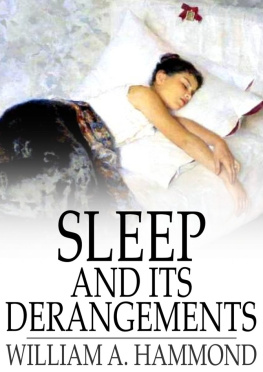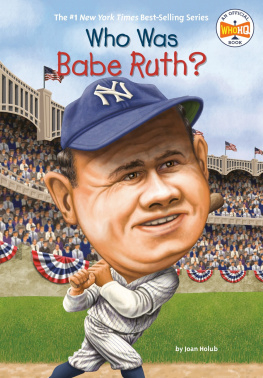The Great War and the
Moving Image
The Great War and the Moving Image focuses upon the Allied war effort on the Western Front and in the Mediterranean. In doing so, the book addresses topics ranging from how carefully selected images projected a positive portrayal of ambulance trains, through films instructional role promoting self-sufficiency on the home front, to the vital role of makeshift YMCA cinemas both sides of the Channel.
With editors and contributors who are authorities on cinema in wartime Britain and on the British response to the challenge of total war, the volume highlights the power that the moving image had during the Great War. In the introduction, the editors consider why the First World War can be seen as the first uniquely cinematic conflict. Later, historians from Britain, Australia, and America go on to explore films pioneering role as a powerful vehicle for propaganda at home and abroad, and its contribution to maintaining morale among soldiers on the front line as well as across civilian audiences back home. The book concludes by considering the representation of trench warfare in todays hi-tech computer games.
This book was originally published as a special issue of the Historical Journal of Film, Radio and Television.
Michael Hammond is an Associate Professor in Film History at the University of Southampton, UK. He has written extensively about cinema and the First World War, including The Big Show: British Cinema Culture and The Great War (2006). His current research is concerned with the impact of the First World War on the aesthetic practices of the Hollywood studios between 1919 and 1939.
Adrian Smith is Emeritus Professor of Modern History at the University of Southampton, UK, and is currently writing the authorised biography of the industrialist and aviation pioneer Sir Richard Fairey. He has previously written biographies of Lord Mountbatten and the First World War ace Mick Mannock, and a history of the New Statesman.
The Great War and the
Moving Image
Edited by
Michael Hammond and Adrian Smith
First published 2018
by Routledge
2 Park Square, Milton Park, Abingdon, Oxon, OX14 4RN, UK
and by Routledge
711 Third Avenue, New York, NY 10017, USA
Routledge is an imprint of the Taylor & Francis Group, an informa business
2018 IAMHIST & Taylor & Francis
All rights reserved. No part of this book may be reprinted or reproduced or utilised in any form or by any electronic, mechanical, or other means, now known or hereafter invented, including photocopying and recording, or in any information storage or retrieval system, without permission in writing from the publishers.
Trademark notice: Product or corporate names may be trademarks or registered trademarks, and are used only for identification and explanation without intent to infringe.
British Library Cataloguing in Publication Data
A catalogue record for this book is available from the British Library
ISBN 13: 978-1-138-20757-8
Typeset in Times New Roman
by RefineCatch Limited, Bungay, Suffolk
Publishers Note
The publisher accepts responsibility for any inconsistencies that may have arisen during the conversion of this book from journal articles to book chapters, namely the possible inclusion of journal terminology.
Disclaimer
Every effort has been made to contact copyright holders for their permission to reprint material in this book. The publishers would be grateful to hear from any copyright holder who is not here acknowledged and will undertake to rectify any errors or omissions in future editions of this book.
Contents
Citation Information
The chapters in this book were originally published in the Historical Journal of Film, Radio and Television, volume 35, issue 4 (December 2015). When citing this material, please use the original page numbering for each article, as follows:
Introduction
The Great War and the Moving Image
Adrian Smith and Michael Hammond
Historical Journal of Film, Radio and Television, volume 35, issue 4 (December 2015), pp. 553558
Chapter 1
Writing History on the Page and Screen: Mediating Conflict through Britains First World War Ambulance Trains
Rebecca Harrison
Historical Journal of Film, Radio and Television, volume 35, issue 4 (December 2015), pp. 559578
Chapter 2
Everybodys Business: Film, Food and Victory in the First World War
Stella Hockenhull
Historical Journal of Film, Radio and Television, volume 35, issue 4 (December 2015), pp. 579595
Chapter 3
Forgetting their troubles for a while: Australian soldiers experiences of cinema during the First World War
Amanda Laugesen
Historical Journal of Film, Radio and Television, volume 35, issue 4 (December 2015), pp. 596614
Chapter 4
Putting the moral into morale: YMCA cinemas on the Western Front, 19141918
Emma Hanna
Historical Journal of Film, Radio and Television, volume 35, issue 4 (December 2015), pp. 615630
Chapter 5
Snapshots: Local Cinema Cultures in the Great War
Leen Engelen, Leslie Midkiff DeBauche and Michael Hammond
Historical Journal of Film, Radio and Television, volume 35, issue 4 (December 2015), pp. 631655
Chapter 6
Pixel Lions the image of the soldier in First World War computer games
Chris Kempshall
Historical Journal of Film, Radio and Television, volume 35, issue 4 (December 2015), pp. 656672
For any permission-related enquiries please visit:
http://www.tandfonline.com/page/help/permissions
Notes on Contributors
Leslie Midkiff DeBauche is Professor Emerita at the University of Wisconsin-Stevens Point, USA. She is the author of Reel Patriotism, The Movies and World War I (1997). She is currently collecting and analysing a set of scrapbooks created by teenaged American girls in the 1910s and 1920s. These documents hold a rich archive of material about the everyday lives of girls and the roles that the movies played in their lives.
Leen Engelen is a film historian working at the LUCA School of Arts and Leuven University, Belgium. Her research has focused mainly on Belgian cinema and cinema culture during the Great War era and the inter-war period. Her other academic interests include colonial cinema, film posters, film distribution, and visual culture of the First World War.
Michael Hammond is an Associate Professor in Film History at the University of Southampton, UK. He has written extensively about cinema and the First World War, including The Big Show: British Cinema Culture and The Great War (2006). His current research is concerned with the impact of the First World War on the aesthetic practices of the Hollywood studios between 1919 and 1939.
Emma Hanna is a Research Fellow in History at the University of Kent, UK. Her research focuses on modes of entertainment on the home and fighting fronts in the First World War, principally cinema and music; and the work of organisations such as the YMCA. She is the author of The Great War on the Small Screen: Representing the First World War in Contemporary Britain















